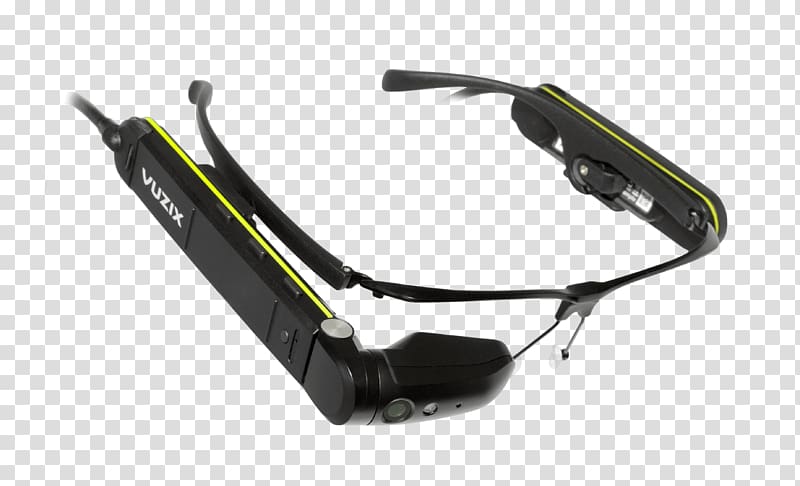For over a decade, the smartphone has been the undisputed center of our digital universe. It’s our primary portal for communication, information, entertainment, and work. But as with every dominant technology, its limitations are becoming increasingly apparent. We are tethered to glowing rectangles, our heads bowed, our thumbs swiping, and our attention constantly fractured. This interaction model, while revolutionary, is fundamentally indirect. We are always manipulating a proxy—a device in our hand—rather than interacting with the digital world as seamlessly as we do the physical one. Now, a powerful convergence of technologies is heralding a paradigm shift, one that promises to dissolve the screen between us and our data. The latest Neural Interfaces News suggests we are on the cusp of a new computing platform, one driven by artificial intelligence, augmented reality, and direct neural control. This isn’t just an evolution; it’s a fundamental reimagining of human-computer interaction that could finally signal the beginning of the end for the smartphone era.
Understanding the New Ecosystem: Beyond a Single Device
The post-smartphone future isn’t about a single replacement gadget but rather a sophisticated, interconnected ecosystem of technologies that work in concert. This new platform is built on three foundational pillars: a revolutionary input method, an intuitive display system, and a powerful AI brain. The synergy between these components is what enables a truly ambient and frictionless computing experience, moving technology from our hands into the natural flow of our lives.
The Core Components
At the heart of this shift is the neural interface. Unlike invasive Brain-Computer Interfaces (BCIs) often depicted in science fiction, the emerging consumer-grade technology focuses on non-invasive methods, primarily electromyography (EMG). These systems use sensors, often worn in a wristband or integrated into the frame of glasses, to detect the subtle electrical signals your brain sends to your muscles. When you intend to make a gesture, like tapping a finger or swiping your hand, your brain sends a specific neural signal down your arm. The EMG sensors intercept and decode this signal before the physical movement is completed. This allows for an incredibly fast and intuitive control scheme where a mere intention translates into a digital command. This is a monumental leap forward, turning the human nervous system into the ultimate input device.
The second pillar is the display. The screen is dissolved and replaced by miniaturized projection systems integrated into lightweight smart glasses. This technology, a key topic in Smart Glasses News, uses advanced optics and micro-projectors to overlay high-resolution, full-color digital information directly onto the user’s field of view. Instead of looking down at a phone, you could see navigation arrows appearing on the street ahead, incoming messages hovering discreetly in your periphery, or a 3D model of a product sitting on your coffee table. This is the promise of true augmented reality, as covered in AR/VR AI Gadgets News, where the digital and physical worlds merge into a single, cohesive reality.
Tying it all together is the third pillar: powerful, on-device AI. The sheer volume of data from neural sensors and the real-world environment (via cameras and microphones) requires real-time processing. The latest developments in AI Edge Devices News focus on creating powerful, low-power AI chips that can run complex algorithms directly on the device. This local processing is critical for privacy and for the near-instantaneous response times required for a seamless experience. This onboard AI acts as a predictive, contextual engine—an evolution of today’s AI Assistants News—that anticipates your needs, filters notifications, and presents the right information at the right moment, all controlled by your neural intent.
The Practical Impact: How Neural Interfaces Will Reshape Daily Life
The theoretical promise of this technology is staggering, but its true value lies in its practical applications across every facet of our lives. By removing the friction of a physical device, neural interfaces will unlock new levels of convenience, creativity, and accessibility, fundamentally changing our relationship with technology and the environment around us.

The Connected Home and Beyond
The vision of the truly smart home, a central theme in Smart Home AI News, finally becomes attainable. Imagine walking into a room and, with a subtle, almost imperceptible hand gesture, dimming the lights. The neural interface on your glasses or wristband interprets your intent, communicating instantly with your AI Lighting Gadgets News-integrated system. Adjusting the thermostat, starting your coffee maker, or telling your Robotics Vacuum News-featured cleaner to start a cycle becomes as natural as a thought. Your home becomes an extension of your will.
This extends beyond simple commands. Your AI Companion Devices News will evolve from stationary speakers to ever-present assistants that can see what you see and understand your context. If you’re looking at a plant, your AI could identify it and overlay care instructions in your vision. When you receive an alert from your AI Security Gadgets News, you could see a live feed from the camera in a small window in your view and dismiss it or call for help with another simple gesture. This contextual awareness makes technology a proactive partner rather than a reactive tool.
Revolutionizing Industries and Personal Wellness
The impact on professional and personal life will be equally profound. For creators and engineers, the latest AI Tools for Creators News will integrate with these interfaces, allowing them to sculpt 3D models in the air or collaborate on architectural plans overlaid on a real-world construction site. In the corporate world, AI Office Devices News will be transformed, with workers able to pull up data, charts, and communications during a meeting without ever breaking eye contact or fumbling with a laptop.
Perhaps the most significant advancements will come in health and accessibility. The latest Health & BioAI Gadgets News points to wearables that not only track your vitals but also provide real-time feedback through an AR display. Your AI Fitness Devices News could project a virtual trainer in front of you, correcting your form in real-time. For individuals with mobility challenges, this technology is nothing short of revolutionary. As a leading topic in AI for Accessibility Devices News, neural interfaces could empower users with motor neuron diseases to communicate, control their environment, and interact with the digital world with unprecedented freedom and independence.
Challenges on the Horizon: Technical, Ethical, and Societal Hurdles
While the vision of a neurally-integrated future is compelling, the path to achieving it is fraught with immense technical and ethical challenges. Overcoming these hurdles will be just as important as the initial innovation itself and is a constant focus of AI Research / Prototypes News.
The Engineering Challenge
The laws of physics present the first major obstacle. Cramming high-performance processors, advanced optical projectors, multiple sensors (EMG, cameras, microphones), and a battery capable of all-day use into a form factor as small and light as a standard pair of glasses is an extraordinary engineering feat. The thermal output alone is a significant problem—these devices must remain cool and comfortable against the user’s skin. Furthermore, the accuracy of the neural interface is paramount. The AI models must be sophisticated enough to learn each user’s unique neural patterns and differentiate between intentional commands and stray thoughts or involuntary muscle twitches. A “misfire” that accidentally sends a sensitive email is far more problematic than a simple smartphone typo.

The Ethical Minefield
Beyond the technical, the ethical implications are profound. These devices will collect an unprecedented amount of personal data. The cameras see what you see, the microphones hear what you hear, and the EMG sensors read signals directly from your nervous system. This raises critical questions about privacy and data ownership. Who has access to this data? How is it secured? The potential for misuse, whether by corporations for hyper-targeted advertising or by malicious actors, is immense. Securing a neural interface is not just about protecting data; it’s about protecting a user’s very agency in the digital world. The threat landscape expands from hacking a device to hacking a person’s interaction with reality.
Finally, there is the issue of the digital divide. If this technology becomes the next dominant computing platform, what happens to those who cannot afford it or choose not to use it? We risk creating a two-tiered society where “augmented” individuals have a significant advantage in information access and productivity over their “unaugmented” counterparts. Ensuring equitable access and establishing societal norms for the use of such powerful technology will be a critical conversation for us all.
Embracing the Future: Tips and Considerations for What’s Next
The transition to a post-smartphone world will be gradual, not sudden. It will be an iterative process of augmentation, where new devices and interfaces complement and eventually supersede the ones we use today. For developers, consumers, and society at large, preparing for this shift requires a forward-thinking and responsible approach.
For Consumers and Developers

For developers, the focus must be on creating genuinely useful, human-centric applications. The novelty of the technology will wear off quickly; long-term adoption will depend on solving real-world problems and enhancing daily life in a meaningful way. This means prioritizing intuitive design and ensuring the user is always in control. A key best practice will be radical data transparency. Companies that provide users with clear, unambiguous control over their personal data will build the trust necessary for mainstream acceptance.
For consumers, it’s important to approach this new wave of technology with informed optimism. Stay educated on the latest Wearables News and understand the privacy policies of the devices you consider adopting. Engage in public discourse about the ethical implications and advocate for strong data protection regulations. The future of this technology will be shaped not just by the companies that build it, but by the consumers who use it and the standards they demand.
The Broader Technological Trajectory
This trend is part of a larger movement in technology towards ambient computing. We see similar principles at play in the development of Autonomous Vehicles News, where a complex web of AI Sensors & IoT News works to create a seamless, intelligent experience. The AI that helps a car navigate a city is conceptually similar to the AI that will help a person navigate their day. Likewise, advancements in Drones & AI News are pushing the boundaries of real-time environmental awareness and interaction, lessons that will be applied to personal AR. It’s a convergence of many fields, from AI-enabled Cameras & Vision News to AI Personal Robots News, all pointing towards a future where technology is less of a distinct “thing” we use and more of an invisible layer integrated into our world.
Conclusion
The era of the smartphone is not over, but its successor is clearly visible on the horizon. The convergence of non-invasive neural interfaces, advanced augmented reality displays, and powerful edge AI represents the most significant shift in personal computing since the iPhone. This new paradigm promises to dissolve the final barrier between the digital and physical worlds, creating a truly seamless, contextual, and intuitive way of interacting with information and technology. While the path forward is filled with significant technical and ethical challenges that must be navigated with care, the potential is undeniable. The conversation sparked by the latest Neural Interfaces News is no longer a matter of science fiction. It is a tangible glimpse into a future where technology is not something we hold in our hands, but an extension of our own minds.










